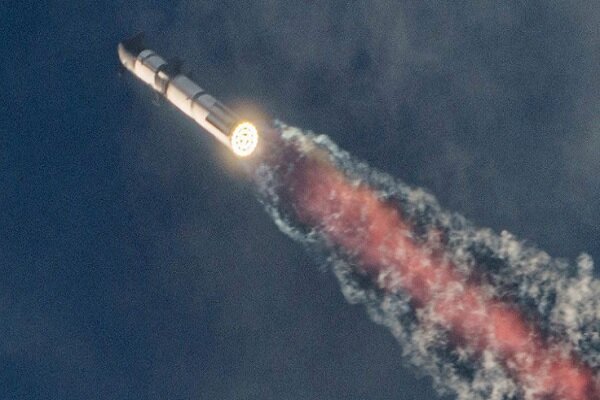
The company’s Starship craft successfully launched Thursday morning, traveling more than halfway around the world before burning up over the Indian Ocean, The Washington Post reported. After two previous attempts, this latest endeavor was SpaceX’s most promising yet, a welcome occurrence for Elon Musk’s space-exploration company, Yahoo News reported.
“It’s incredible to see how much further we got this time around,” Dan Huot, a SpaceX spokesperson, said during the company’s livestream.
Following Starship’s practically perfect launch, the craft flew for almost an hour. All 33 of the booster’s engines ignited successfully, the Post noted, and the Starship craft separated and flew around the globe at speeds up to 16,000 miles per hour. While the rocket could have entered orbit around Earth, SpaceX opted to have it reenter the atmosphere over the Indian Ocean. Generating heat of some 2,600 degrees Fahrenheit, Starship didn’t survive its return to Earth.
Despite the less-than-stellar ending, the entire process is being hailed by SpaceX as a success, given that Starship reached many key milestones during the test flight. In its first flight, back in April, the craft’s engines failed and the force of the rocket blew up its launchpad and sent debris into the Texas shoreline. The second attempt, in November, started off well, but engine failure eventually led to the vehicle’s demise.
Once Starship is in tip-top shape, the system will be used to take humans back to the moon, with NASA investing $4 billion into Starship’s development. Musk has said that SpaceX has several other rockets in production, and the company added that “upgrades derived from the flight test will debut on the next Starship and Super Heavy vehicles.” (Super Heavy is the name of the booster, while the combined booster and spacecraft is called Starship.)
Earlier this year, NASA delayed its Artemis moon missions to 2025 and 2026, so Musk and SpaceX have some time to get Starship ready for its big moment. They’ve seemingly learned quite a bit from the two prior tests, and this third one should be no different. “Each of these flight tests continue to be just that: a test,” the company said in a statement prior to Thursday’s flight. “They aren’t occurring in a lab or on a test stand but are putting flight hardware in a flight environment to maximize learning.”
MNA




